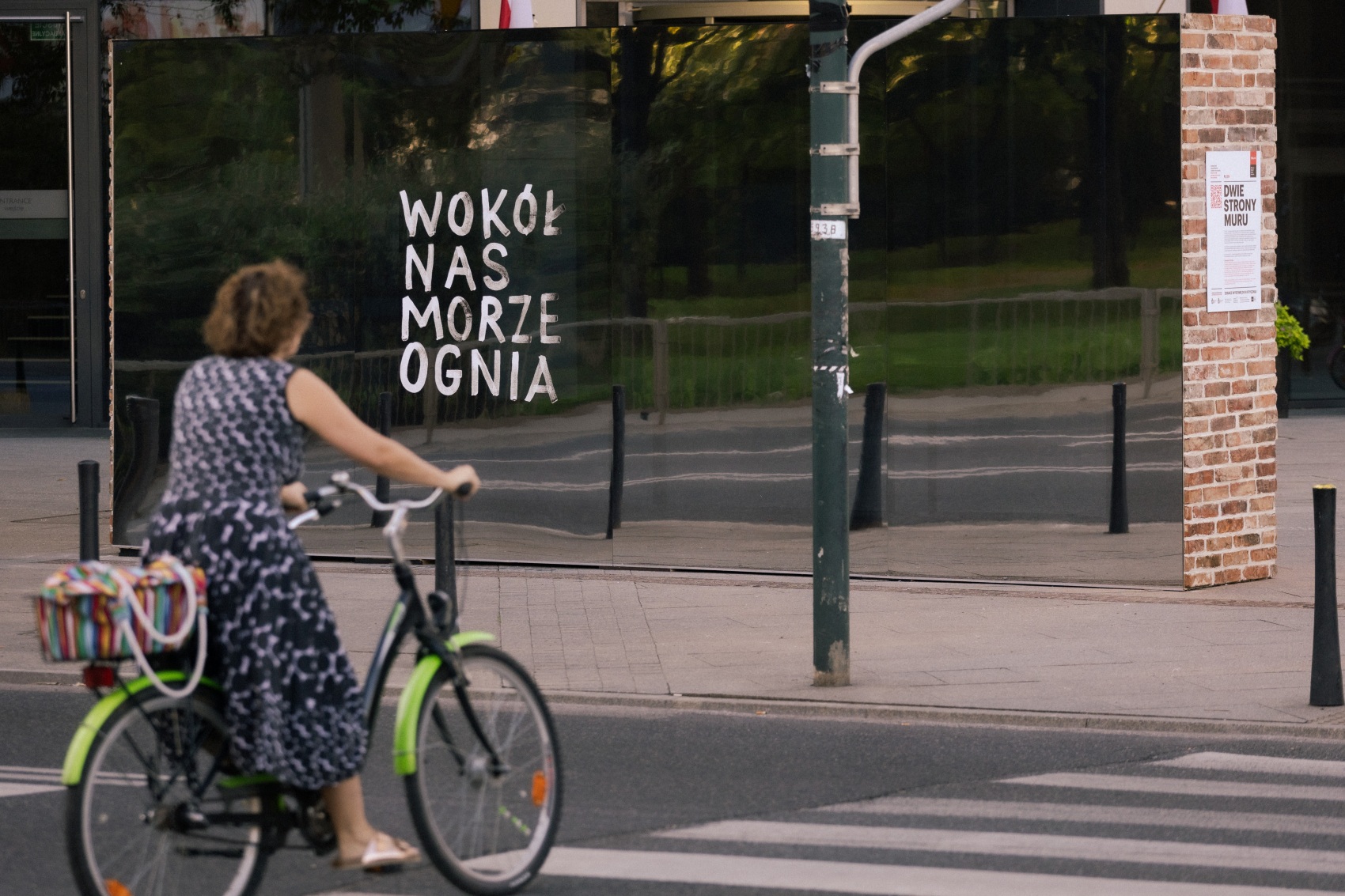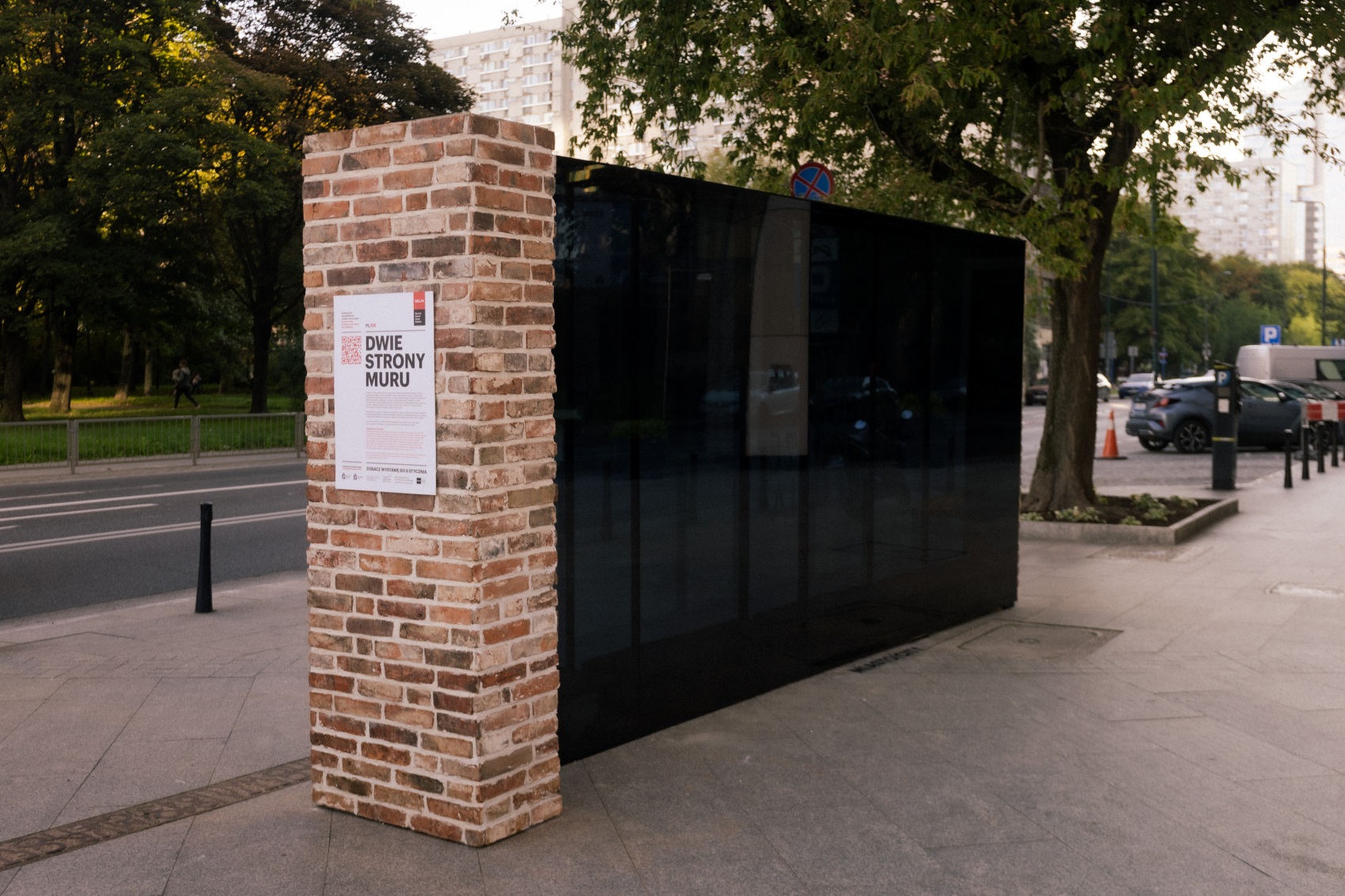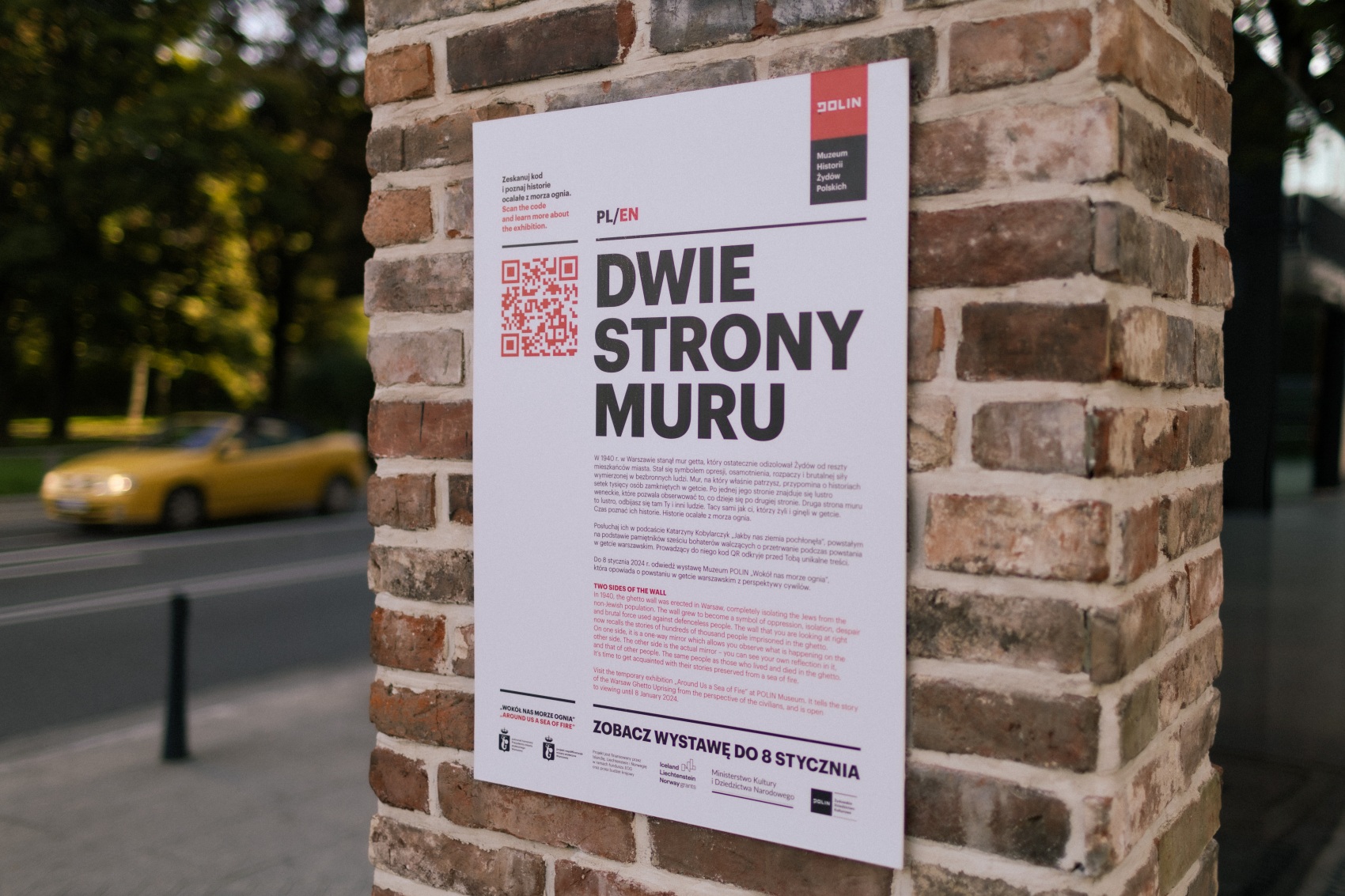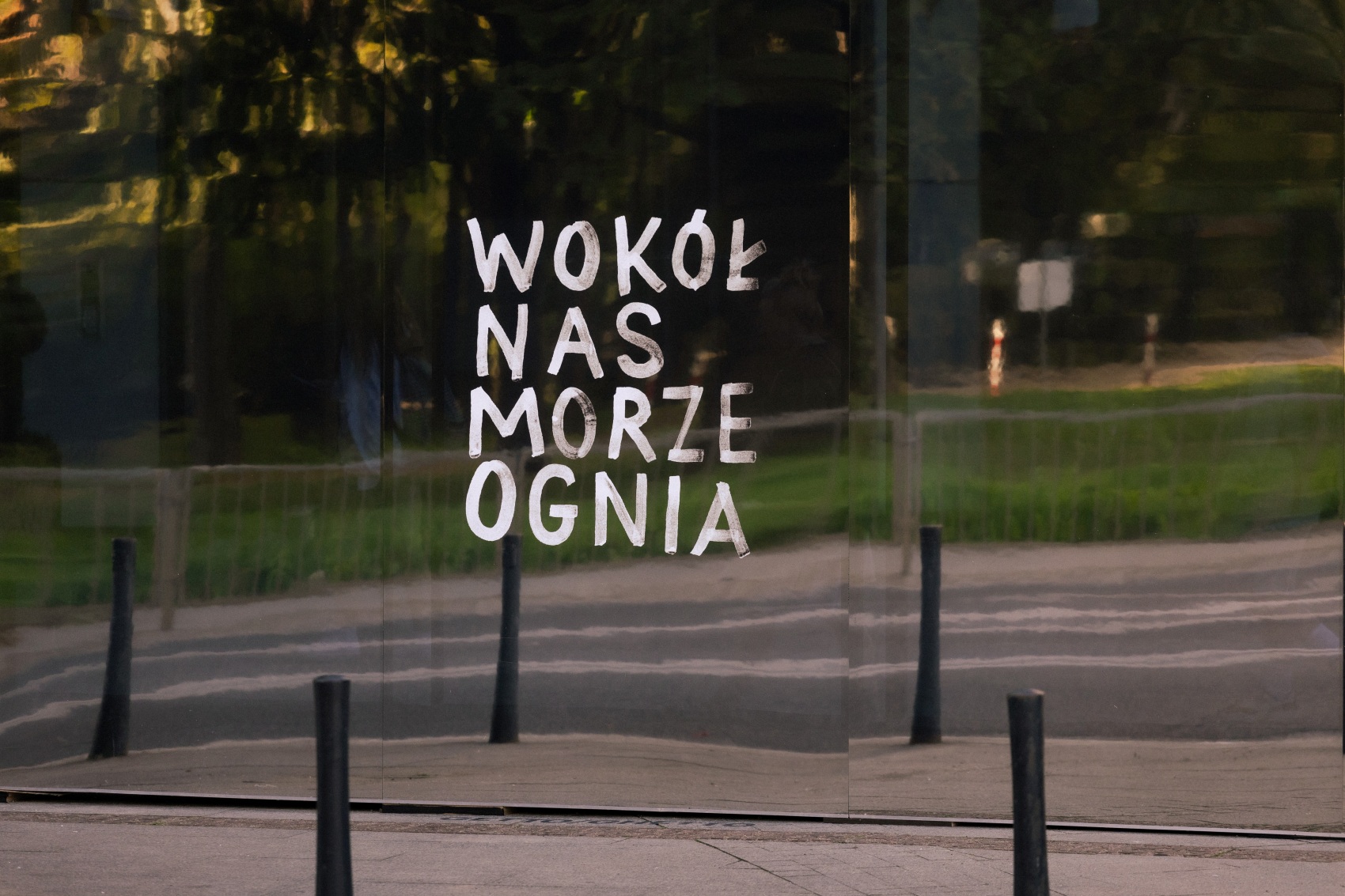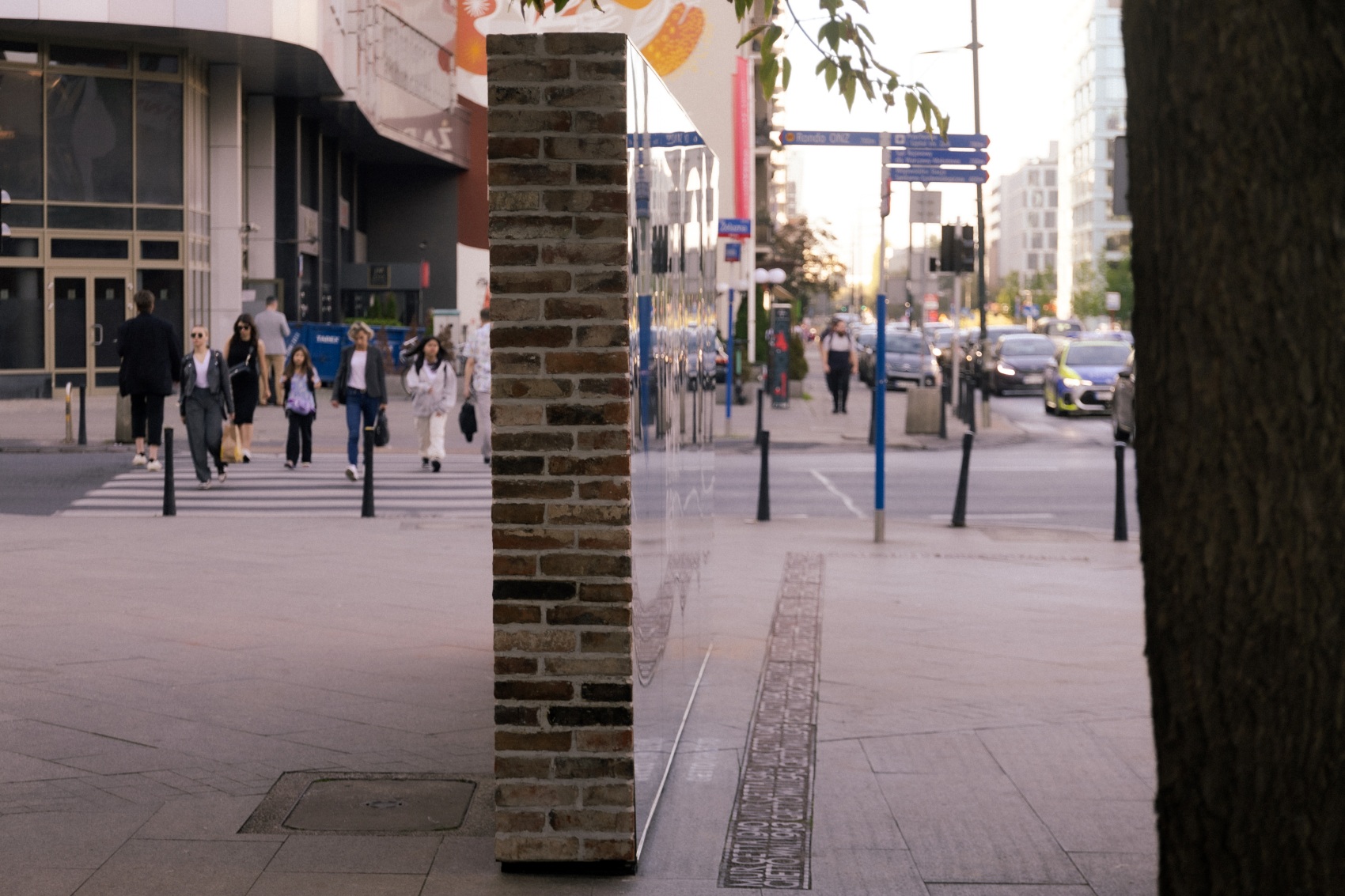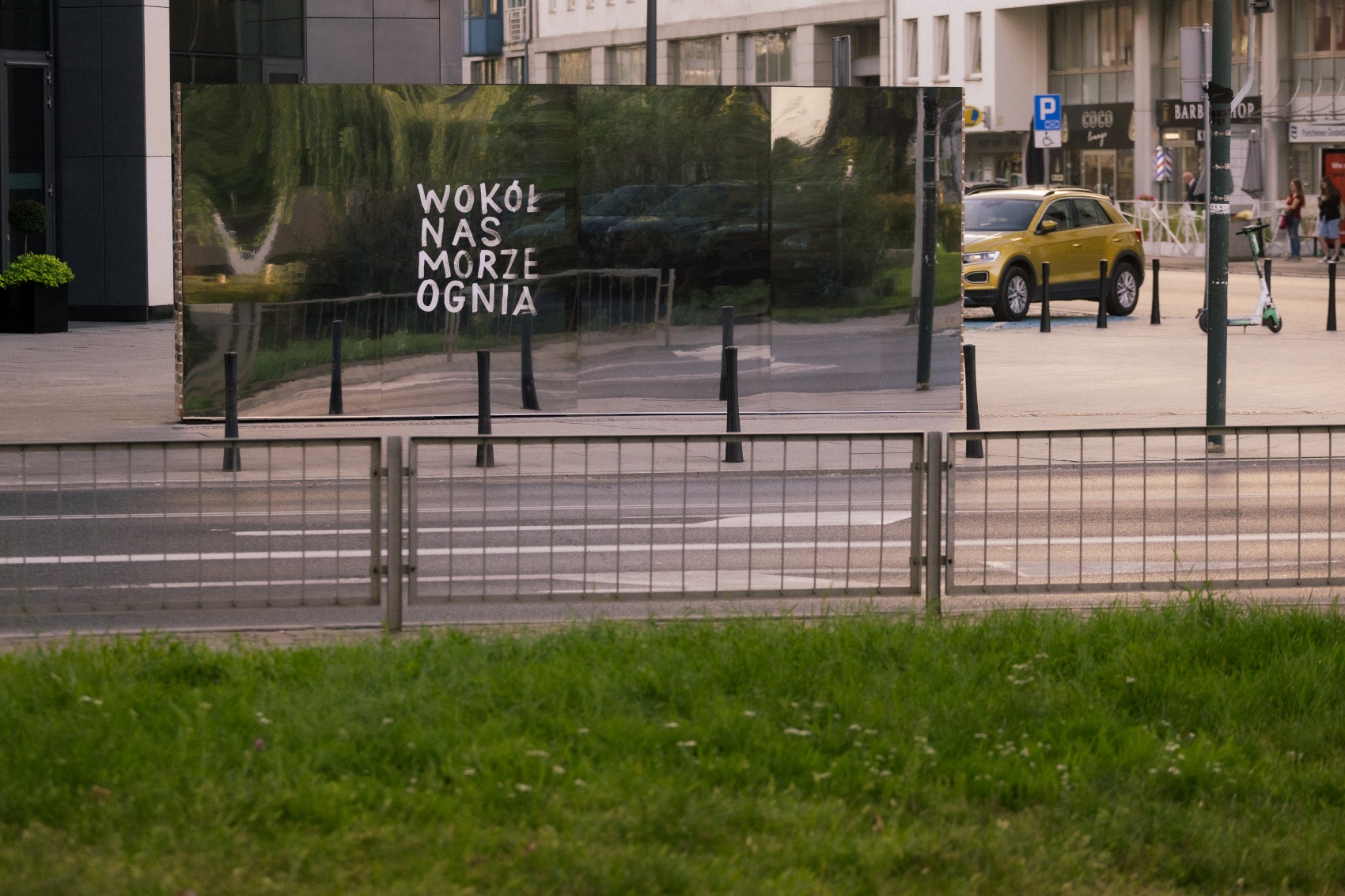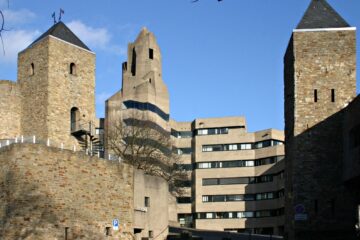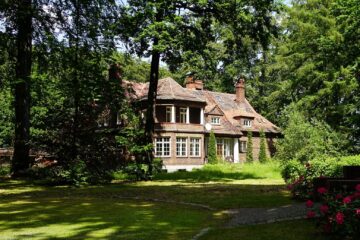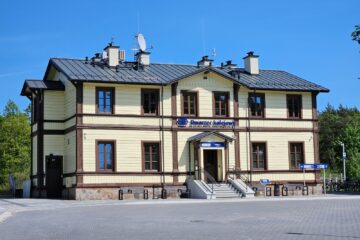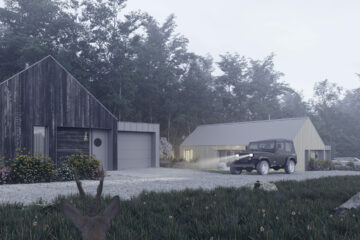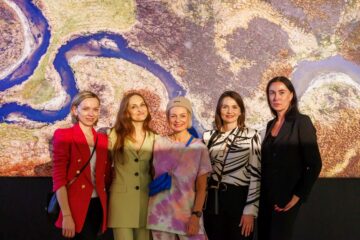The wall of the Warsaw Ghetto was built in 1940. It appeared to separate the Jewish community from the rest of Warsaw’s inhabitants. Over the years, the wall has become a symbol of oppression, loneliness and brute force against defenceless people. The year 2023 marks the 80th anniversary of the Warsaw Ghetto Uprising. Testimonies – diaries and records of several people hiding in the burning ghetto – recall the events of those years .The symbolic wall – an installation that stood on 6 September 2023 at the junction of Grzybowska and Żelazna Streets in Warsaw, on the historical border of the ghetto, evokes the memory of these tragic events from the perspective of their participants.
The aim of the installation Two Sides of the Wall, prepared by the POLIN Museum in cooperation with the Saatchi & Saatchi agency, is to recall the history of hundreds of thousands of Jewish women and Jews confined in the ghetto
Our installation is a symbolic wall, on one side of which is a Venetian mirror allowing us to observe what happens behind the wall. The other side of the installation is a mirror in which people passing by and observing are reflected,” says Marta Dziewulska, POLIN spokeswoman. “The same as those who lived and died in the ghetto. It is time to get to know their stories. Stories rescued from a sea of fire,” proclaims a sign addressed to passers-by
This is one of those projects that really moves. We wondered how to draw the attention of busy passers-by to the theme of the exhibition <A Sea of Fire Around Us>. The idea of building a symbolic wall, which allows you to freely look at your surroundings from only one side, seemed extremely poignant to us,’ says Małgorzata Wajdziak, Intergrated Communication Director Saatchi & Saatchi
The installation ‘Two sides of the wall’ is accompanied by a podcast entitled ‘Jakby nas ziemia pochłonęła’ by writer and journalist Katarzyna Kobylarczyk. Based on the diaries of those in hiding during the uprising, the podcast is a moving literary reportage in six episodes. It interweaves the fates of six characters struggling to survive during the Warsaw Ghetto Uprising: Stella Fidelseid, Mieczyslaw Baruch Goldman, the anonymous girl from the bunker on Miła Street, Mr Maura, Luke Menes and Krystyna Budnicka. All of them are also protagonists of the exhibition “Around us a sea of fire. The fate of Jewish civilians during the Warsaw Ghetto Uprising’, on display at the POLIN Museum until 8 January 2024
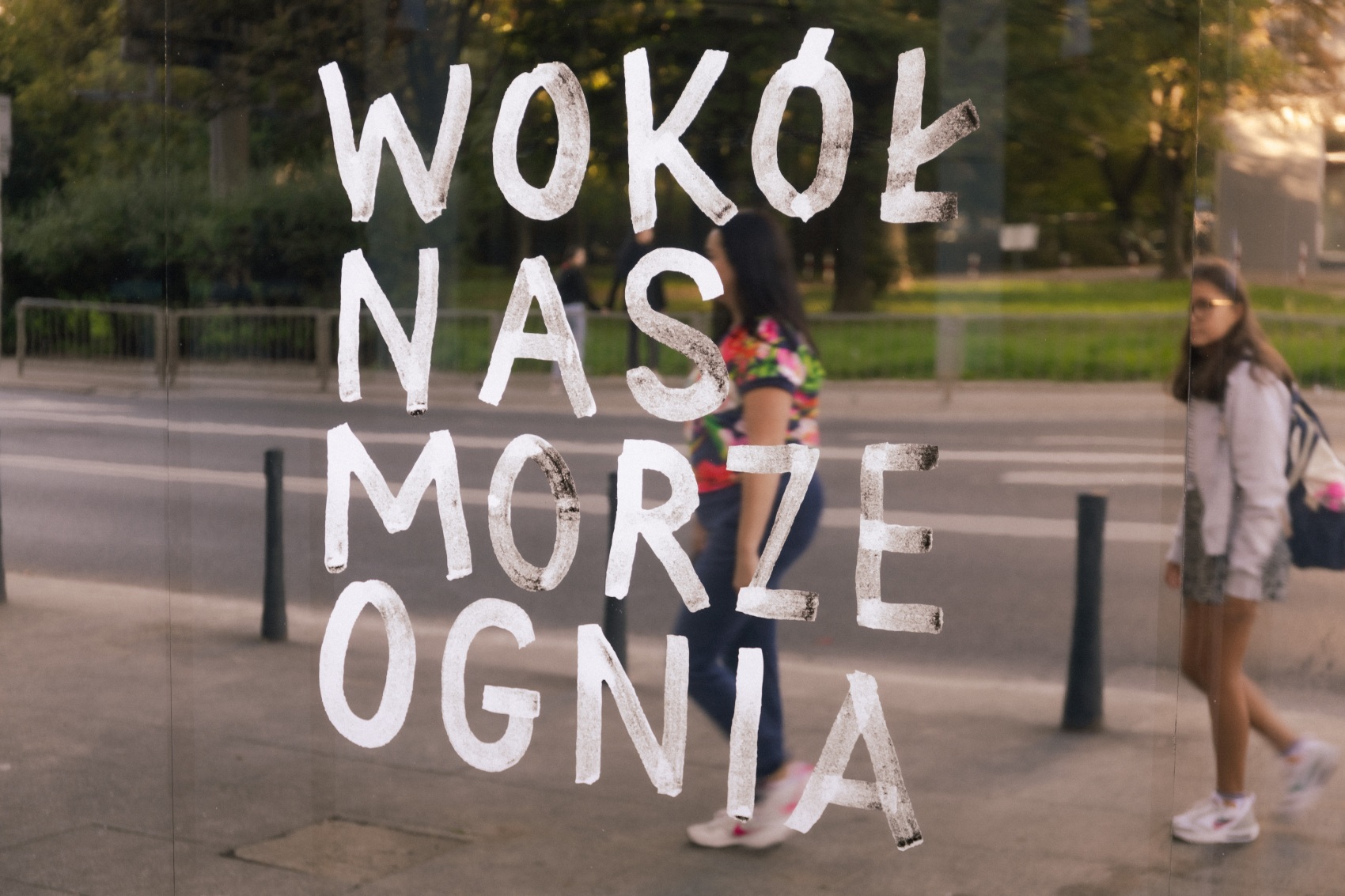
The fact that the starting material is diaries was of great importance to me. Personal stories about oneself. Something incredibly intimate. For some people, it is the only thing left. Words. Letters on paper. What remains of Engineer Goldman is not at all the great bunker he built, but precisely the paper. And the girl who wrote down on a piece of paper what happened in the bunker on Miła Street? We don’t even know her name. We don’t know who she was, how old she was. But I see her sitting in the dark in the bunker, maybe by candlelight, maybe on guard by the light of the fires – and she writes. And her words remain. For me, for a person who has been working all her life, writing words, this is a huge testimony that what we do makes sense,” says the author, Katarzyna Kobylarczyk, about the podcast
The podcast will be available to listen to from 6 September on polin.pl, the museum’s YouTube channel and on podcast platforms such as Spotify and Apple Podcast. A link to the podcast in the form of a QR code is also available at the installation itself
The creative idea for the campaign and the realisation of the installation is the responsibility of the Saatchi & Saatchi agency in cooperation with Prodigious (Publicis Groupe), which is collaborating with the POLIN Museum for the second time. The first joint campaign “Different history, same hejt”, prepared in cooperation with the Association of the Jewish Historical Institute in Poland, accompanied the exhibition “Stranger at Home. Around March ’68’ and won as many as 3 Effie Poland awards in 2019. It drew attention to the problem of hate speech and anti-Semitic hate speech present both online and in the media
The installation project is co-financed by the City of Warsaw. The podcasts are funded by Iceland, Liechtenstein and Norway through the EEA Fund and the national budget. The installation will be available to passers-by until the end of October 2023
More at: www.dwiestronymuru.pl
photo: Maciej Jaźwiecki
source: POLIN(www.polin.pl)
Read also: History | Art | Culture | Warsaw | City | whiteMAD on Instagram

